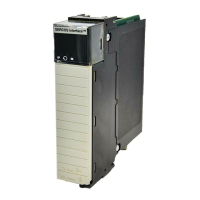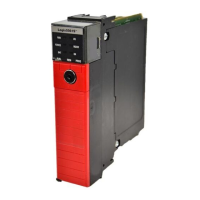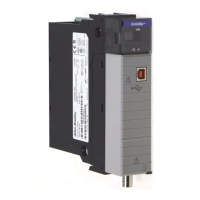Geometries with orientation support
148 Rockwell Automation Publication MOTION-UM002F-EN-P - February 2018
When joints (J1, J2) are rotated, the arms connected to these joints move in the
(X, Z) plane, the mechanical connections of the end plate via spherical joints to
the end of second link (L2) ensure that the base and end plates remain parallel to
each other.
The J6 is connected at the end of the end plate and provides rotation at the end of
the arm. Using the default work and tool frame settings, program the End of Arm
(EOA) to a (X, Z, Rz) coordinate. When a tool is attached to the EOA or a
different work frame (other than the default) is defined, program the Tool Center
Point (TCP) to a full six axis Cartesian point (X, Y, Z, Rx, Ry, Rz). The
application computes the joint values (J1, J2, J6) to move the TCP linearly from
the current position to the programmed full Cartesian position, using the
programmed vector dynamics.
Since there is no rotation on Rx and Ry Orientation axis, Rx orientation value can
only be programed to a value of 180
, Ry is always 0 , and Rz orientation values is
programed within fixed XYZ Euler Angle range of Rz, within +/-180
.
See also
Establish a Reference frame on page 149
Configuration parameters on page 151
Identify the Work Envelope on page 156
Maximum Joint Limit condition on page 158
Work and tool frame offset limits on page 160
Invalid Cartesian positions on page 160

